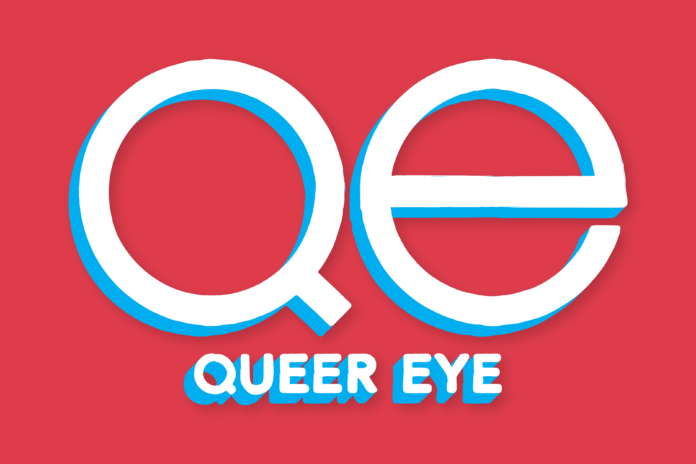Season three churns out more feel-good content
The third season of Netflix’s “Queer Eye” was released on March 15 with eight joyful, uplifting and unapologetically sappy episodes. The show’s stars, referred to as the “Fab Five,” returned with the same charm and chemistry as in previous seasons. The episodes are set in Kansas City, Missouri and focused on a broader spectrum of people than fans of the show have seen before.
This Netflix reboot of Bravo’s “Queer Eye for the Straight Guy” premiered in 2018 and was an instant hit. The likability of the new Fab Five was infectious, from fashion expert Tan France’s posh charm to hair and grooming specialist Jonathan Van Ness’ flamboyant vocabulary and comically overdramatic reactions. Viewers of any background or political ideology can enjoy watching a group of lovable men give makeovers to equally lovable participants, called “heroes” on the show.
Season three was at its best when focusing on more diverse heroes than in the show’s previous seasons. Breaking even further from the original series’ plot premise of gay men giving makeovers to straight men, this season had its first double-feature episode centered around two women. Hardworking sisters Deborah and Mary, who own a barbecue joint called Jones Barb-B-Q, were nominated by Deborah’s daughter so that the Fab Five could teach them how to relax and find time for self-care even with their rigorous schedule.
The highlight of the episode was when France and Van Ness took Deborah to get her missing tooth fixed. For years Deborah had been covering her mouth when she smiled, so seeing her bright and confident grin at the end of the episode was heartwarming.
The Jones sisters exemplify the magic and charm of the show — it’s about watching good, kind people learn to be good and kind to themselves. While the Fab Five is in charge of moving the story along, each episode’s new hero draws viewers back.
The other series highlight was the fifth episode of the season, titled “Black Girl Magic.” The series featured a lesbian hero for the first time, and the Fab Five handled her makeover with genuine respect and care. The episode focused on Jess, a 23-year-old who had struggled with her identity her whole life, both as a lesbian and African-American woman. By the end of the episode, Jess reflected tearfully with the Fab Five upon how she learned that it is “cute and confident to just be black, and be gay and be a woman.”
At the end of the day, the show is not trying to be anything more than it is. While some scenes may feel overly choreographed or prepared for reality TV, the show is good at sticking to its core theme: good people helping other good people. It’s about finding confidence in what you already have and learning to love those things about yourself. The Fab Five rarely try to change people or their habits, which would be an impossible feat in a week’s time. What they do instead is try to show that small improvements can go a long way.
An IndieWire review wrote that, “So much of [the show] is about the battle against inertia, one of the greatest enemies of major life changes.”
The third season strongly emphasized this idea without forcing the heroes too far out of their bubbles or comfort zones. Many themes in the episodes included minor changes in the way one takes care of themselves that, over time, will improve their quality of life.
For example, the season’s second episode “Lost Boy” featured Joey, a program director at an outdoors camp who lacked leadership skills and basic grooming habits. Since Joey lives an active and simplistic life due to his job, the Fab Five did not try to point him in the direction of extravagant grooming or life changes that Joey would not be able to follow. France took him to REI to find outdoorsy clothing that would still look professional, instead of taking him to lavish department stores and forcing him into a suit.
In a recent interview with The Oprah Magazine, the Fab Five discussed the popularity of the show.
“[Fans are] happy to see that there are still people out there that care about others,” said Bobby Berk, the interior designer of the show.
The original “Queer Eye” on Bravo was set in a time where members of the LGBTQ community were fighting for tolerance and civil rights. Today, in a post-Trump era, the show works to bridge the gap between different communities of the country, showing that anyone can come together in the name of self-improvement.
Written By: Alyssa Ilsley — arts@theaggie.org




